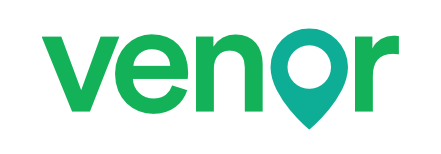Well, I didn’t see this coming. My last blog series, How to Hire Software Development Talent in a Boom Economy, didn’t have the legs I expected it to…
COVID-19 changed everything. And hiring managers across tech, manufacturing, professional services and more are experiencing a reality that’s totally different from the one we faced in 2019.
So what’s changed? How can you be successful in hiring talented individuals for your team? With the unprecedented flood of laid-off / furloughed people in Canada, 7.3 million Canadians applied for federal aid through the Canada Emergency Response Benefit according to Service Canada, is hiring easier than ever? (Hint… it’s not)
Here are four key takeaways.
Landing Niche Talent is Even More Challenging
It feels like the general perception right now is that the market is flooded with active job seekers due to COVID-19. That may be the case… but not for many roles in knowledge-based sectors.
Let’s look at a recent search we took on at Venor. We partnered with a Halifax-based startup on a search for a Software Architect. Through advertising the job posting on Linkedin and our personal social channels we received a fair amount of interest. But when you dig into the data, a different story appears.
We had 41 applicants inbound for the opportunity. Only two of those were in Atlantic Canada (a requirement for this role), and none of the candidates with eligibility to work in the country met the skills criteria for the role. For a similar role, pre-COVID, we actually received MORE applicants with a better fit for the opportunity.
While most of our success in recruitment comes from targeted outreach through our firm’s professional networks vs. general advertising, there’s a trend. If anything, response rates from job seekers and candidates are down, and the talent pool is risk-averse right now.
Recruiting for key roles is still possible in the current climate (and essential for some teams) but it’s taking more effort and more care to land the best people. With that said, it’s important to invest in having more dialogue with candidates, offer more insight into the company’s direction and stability during/after the pandemic, and be more transparent with job seekers during the hiring process to build trust.
All Eyes Are Online
While many of us (me included) miss the connections made while running into people at in-person networking events or catching up with old acquaintances that you happened to see at a coworking space, the shift that we are seeing from in-person interactions to online has brought opportunities as well.
On the recruitment front, employees no longer stumble into jobs without doing online research – a quick Google search can quickly paint a picture of your company, for better or for worse. A well-established online brand, whether it’s your personal Linkedin profile or well-crafted Careers page on your company’s website, is now more powerful than ever. Consumers (or job seekers) will seek out information and educate themselves on products and companies. So, if you want to stand out when recruiting, make sure you are joining online communities that your target audience cares about, contribute to the conversation, explore trending topics and find out who has the talent to join your team. Is your prospective candidate pool on Linkedin, Instagram and/or niche Slack communities? Wherever they are, you should be too.
In the absence of in-person events like job fairs and corporate dinners, you can communicate your message with an effective content marketing strategy focused on your employer brand. Little things that can go a long way are pieces highlighting workplace events, employee profiles, and the creation of blog posts that outline your culture and people. This content will give prospective candidates insight into your company and, hopefully, attract the right people.
Of course, having proper SEO, a well-designed website and an engaged social following are all important here as well.
Refine The Why
Organizations across industries are shifting to offer work-from-home flexibility wherever possible. First Twitter, and now a bit closer to home with Shopify, there is a wave of organizations that are going work-from-home / digital-first even post-pandemic.
This will result in shifts in employee benefits packages too. Perhaps current in-office perks like slides and ping pong tables will turn into home office improvement bonuses or subscription deliveries? Regardless, if you’re recruiting employees who will be working remotely for the foreseeable future, you should be thinking about revamping your employee value proposition according to this new reality.
If you check out Shopify’s website, they offer a “Home office allowance to kit out your crib”. These kinds of perks will resonate with employees who might not get to indulge in the in-office offerings.
Invest in Onboarding
Orientation and onboarding. Most of us have heard the saying before “You only have one shot to make a positive first impression”. It’s crucial to retain top talent once you have invested in bringing them onto your team, especially considering the complexities of hiring during COVID-19.
According to the Society for Human Resource Management, 69% of employees are more likely to stay with a company for 3 years if they experienced great onboarding. It’s clear that having a strong onboarding and orientation plan is a powerful opportunity for employers to integrate and inspire new employees. So, how can you steer your process in the right direction when either all or some of your team is not in the office?
- Document everything: in-office cues and looking over shoulders are not options when you’re working remotely. It’s easy to overlook the little things, so when in doubt write things down for your new hires.
- Make check-ins frequently and deliberately: working from home brings a ton of benefits, but one of the most common issues that employees bring up is the feeling of isolation. Frequent check-ins can counter this, and will help introduce new employees to the rest of the team. Having video here is key.
- Send them some swag: Just because you can’t meet in-person, doesn’t mean you can’t offer up new employees something like a t-shirt, water bottle, hat or notebook. Having something real and tangible just makes things feel different.
These are just a few examples, but the upfront investment in onboarding is worth it.
What’s the overall takeaway here? Recruiting during COVID has created a few challenges, to say the least. It’s also created some new opportunities as well. As some companies start their return to working out of offices, hiring processes will continue to evolve. However, the importance of digital-first recruitment, shifting employee value props, the importance of onboarding will remain as keys to landing elusive, sought-after talent.



